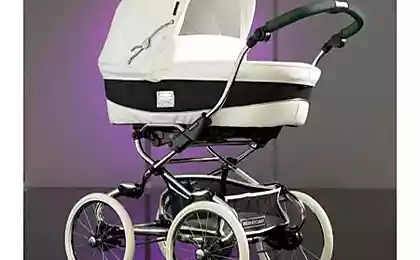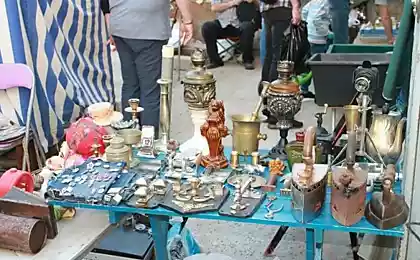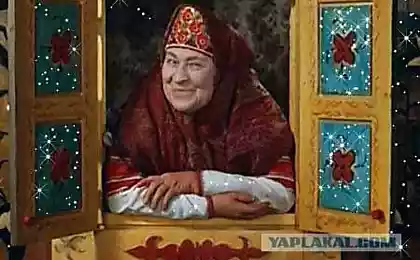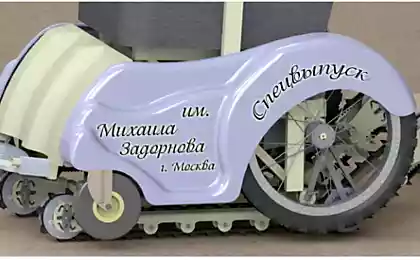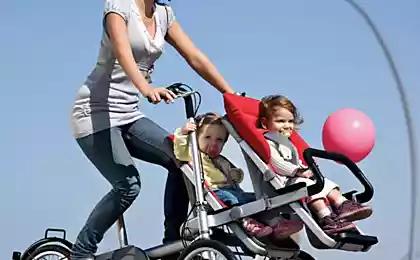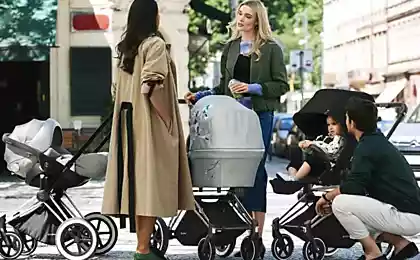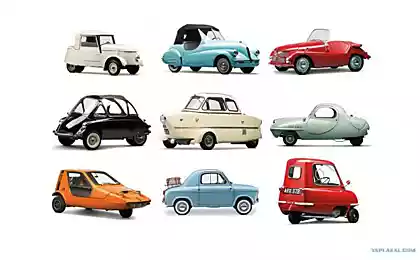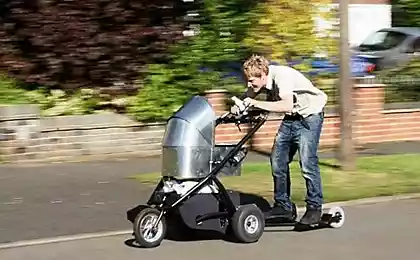1333
Vintage strollers.
Prams have a very interesting story. At first they were made according to the type of crews, and very reminiscent of their appearance and design. While they were truly a work of art.
40 photos + text
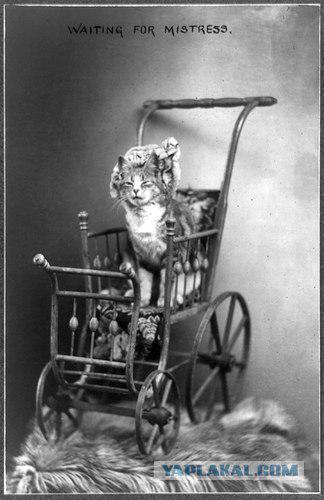
Victorian era wicker baby carriage
-Victorian Era baby carriage or perambulator «pram» - It was made between the late 1880s-1898
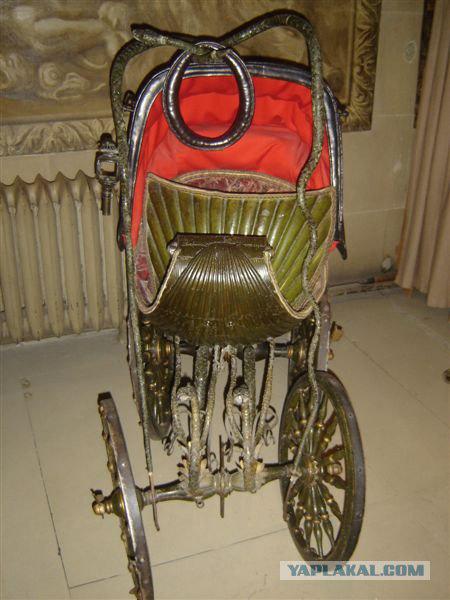
Antique baby carriage at Chatsworth
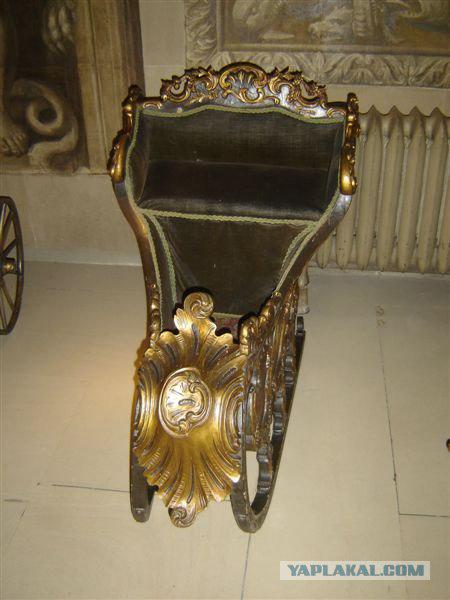
The very first pram was created in 1733 by William Kent, the English landscape architect. He designed it at the request of William Cavendish, Duke of Devonshire third, the father of six children. Actually, it was not a wheelchair in our understanding, and a small children's carriage, drawn by a goat or a pony. The first users fully justified effort spent on them: if the customer is not the father grew up in the service Lieutenant of Ireland, some of the skaters in the stroller kids older, Lord Frederick, was promoted to the rank of field marshal to time, and the younger, Lord John, to the Minister of Finance. Model Kent relished, and soon spread among strollers higher strata of European society. While they were truly a work of art. The middle and lower classes could not afford to buy such an expensive toy, and for more than a century carriage remained incredible curiosity.
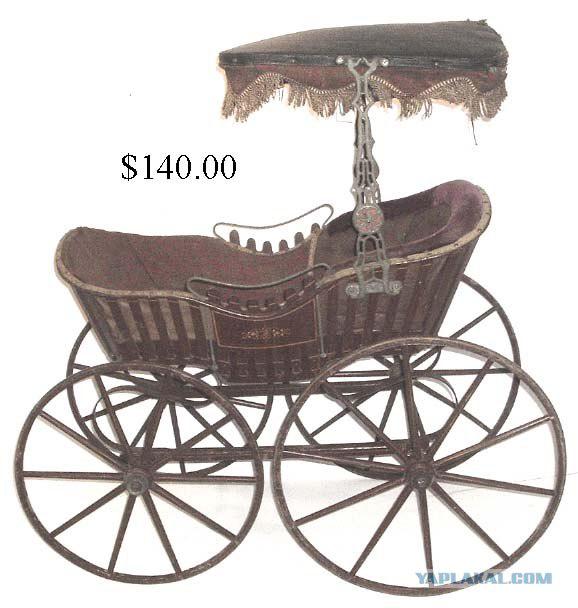
Sani children
Netherlands. The first half of the 18th century.
Wood, metal (iron); carving, gilding, painting.
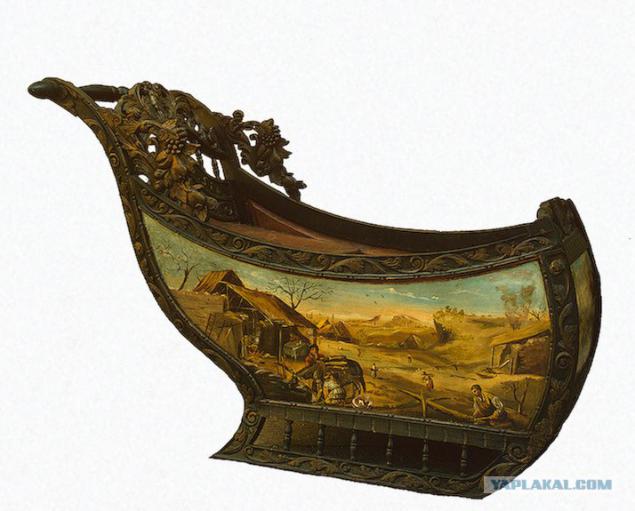
Victorian baby carriage in old paint
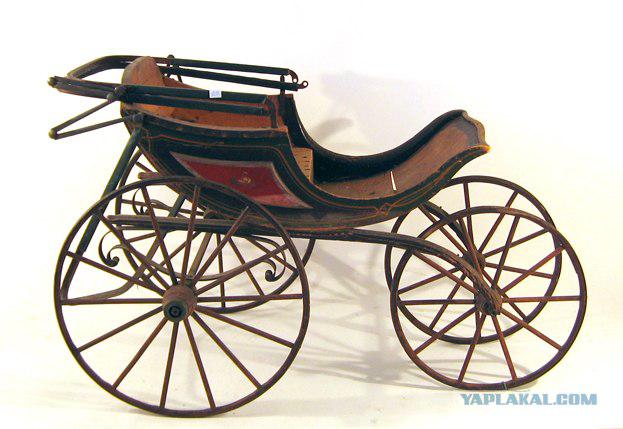
07
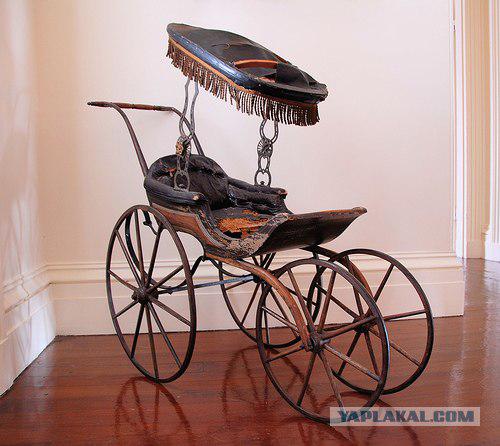
Antique Baby carriage, ca. 1920
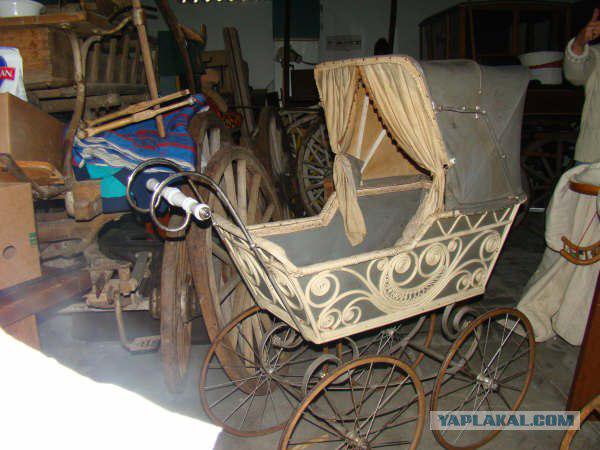
The real fashion on the carriage came in 1840 with the light hand of Queen Victoria, loving mother of nine children, who wished himself to walk with their children in the royal park. Like all the carriages of the time, the Queen's carriage can not be called really easy: it was too high and unstable, she did not have handles, and therefore, it had to pull him. Following the royal family began to acquire a wheelchair all wealthy people, first in England and then throughout the world.
By the 1840s gave way to pony nurses, however, and they continued to drag the cart behind him. No need to care for the child was a sign of a wealthy and prosperous families, the number of workers which allows you to raise a child. So stroller came into our lives and has become a sign of the enormous distance between the child and the mother of the upper classes. Even the names of the models Chair of the time reflected their privilege: the most popular have been the model of "The Duchess" and "Princess."
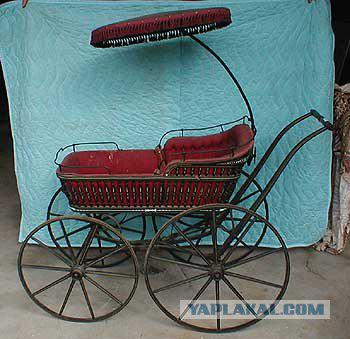
Victorian baby carriage, wicker Laurel Ridge
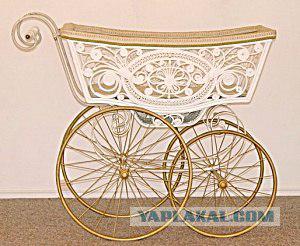
11
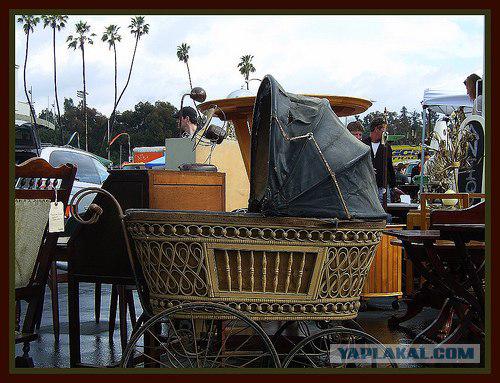
Waterloo Plein - Amsterdam
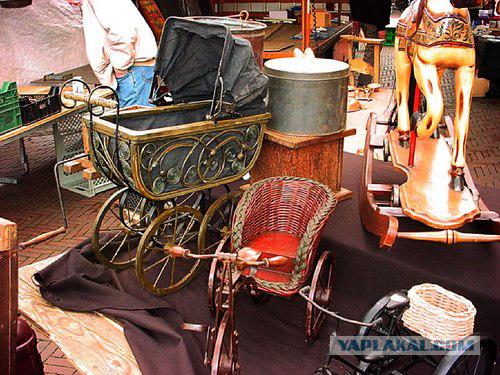
13
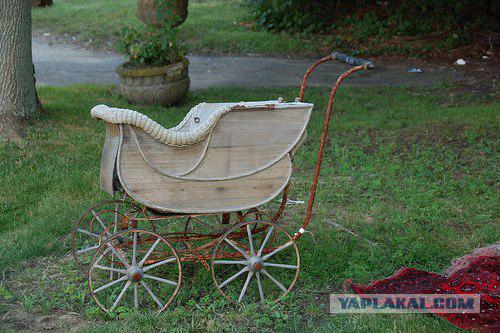
Victorian era wicker baby carriage
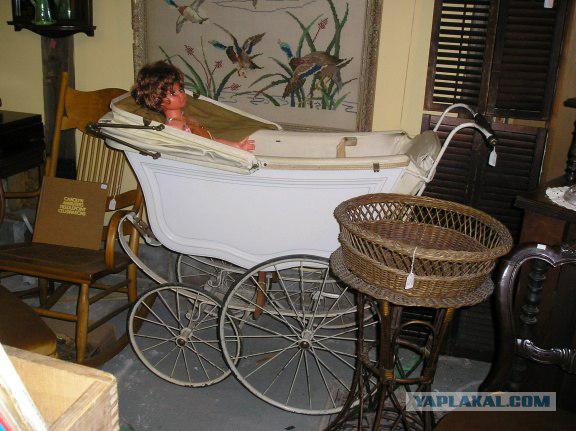
15
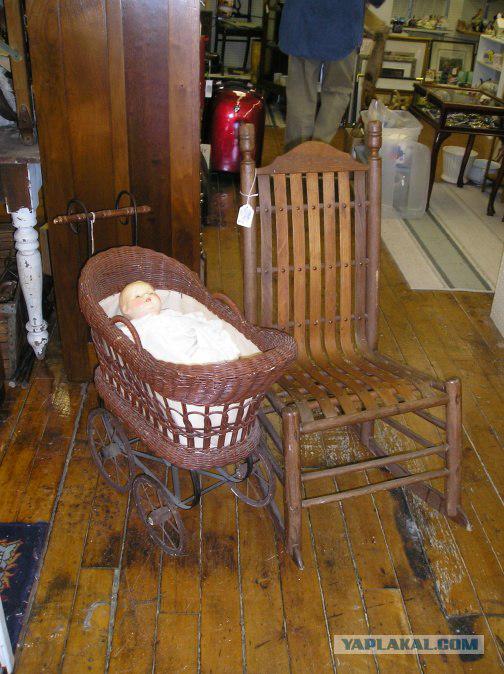
16
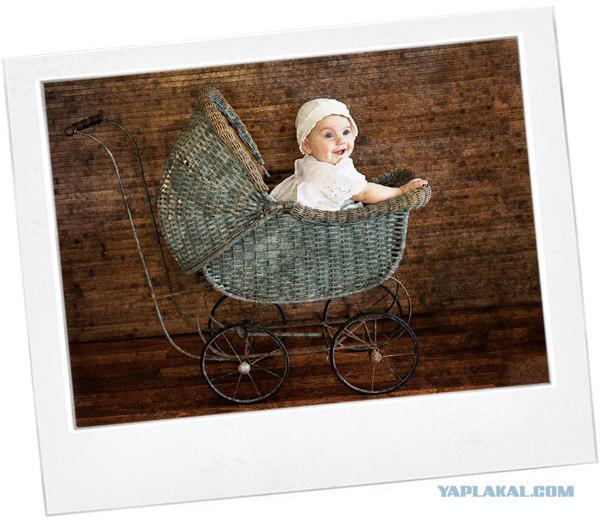
17
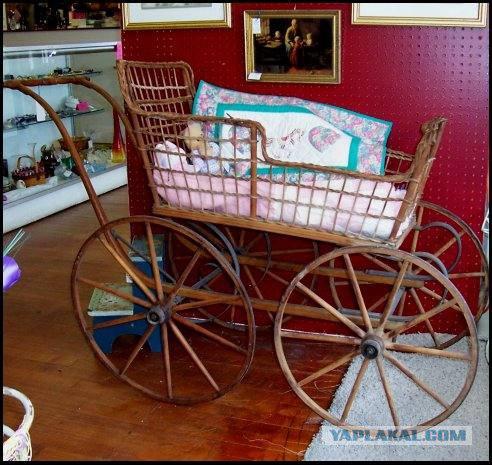
hand painted antique victorian baby carriage
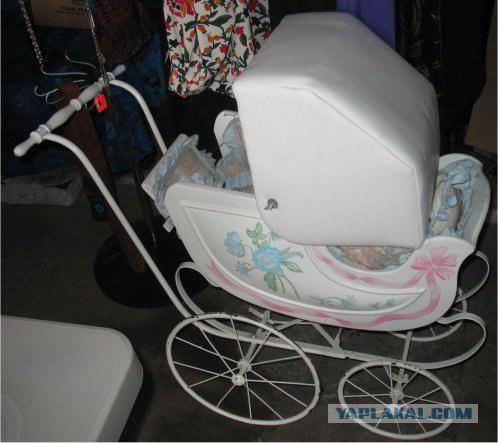
19
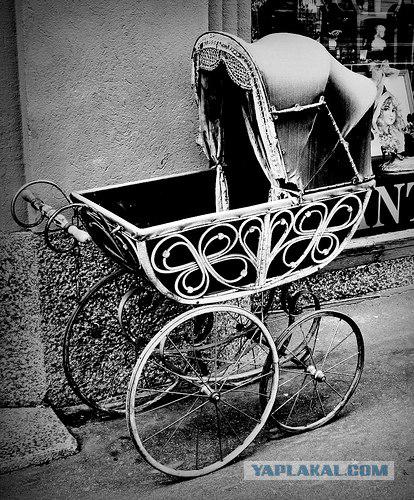
20
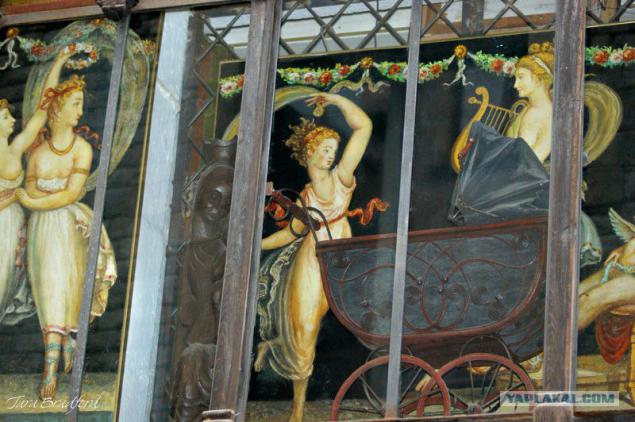
an antique baby or large doll stroller carriage made of wicker with a dark green painted metal frame.
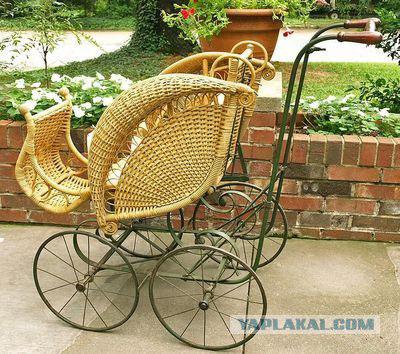
Victorian Baby Carriage
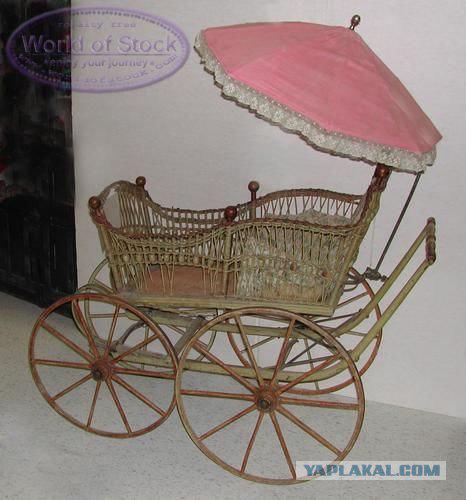
A charming 19th century baby carriage.
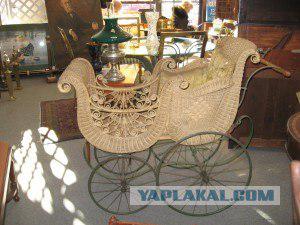
Shoe Carriage
Found in the museam of Space Farms Zoo.
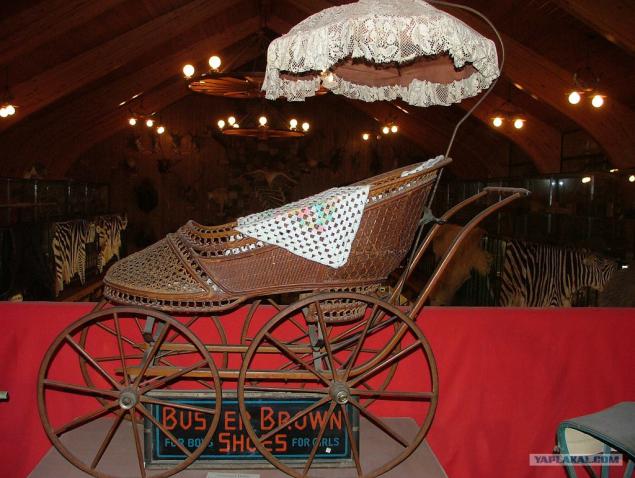
A revolutionary leap occurred in 1853, when Charles Burton patented stroller with a handle at the rear. It has dramatically increased as the handling of child crew, and the extent of the review for the little passenger. However, the appearance of repeating the outlines of adult crews is fully preserved, and remained with him, and the idea that a child must sit in a wheelchair. It is very narrowed the scope of its application: it is suited only for grown children. As for the kids, the cases of loss of the "crew" were not uncommon. Only in the last third of the XIX century carriage finally lost similarities with the adult crew and turned into a cradle on wheels. However, even this metamorphosis has not changed the attitude to a wheelchair as a mode of transport, and due to the fact that it has received the mass distribution, the police in London in 1873, forbade her to carry on the sidewalks. In addition, in 1880 it was made a requirement for all kolyaskovladeltsam - baby carriages equipped with red and white lights. When the fashion for the first cars appeared and avtokolyaski and parents began to require nurses with recommendations and even a driver's license. However, the rapid spread of motor vehicles and gassed streets quickly made all this unnecessary - stroller was ousted in parks and gardens, where it remains today.

This antique German Schweitzer baby carriage has great detail and immense visual appeal! Made of soft metal, it features an umbrella with crocheted trim that hangs from a hook mounted at the back of the pram. The carriage body has a wonderful pierced design overall and the 4 large wheels roll along nicely. Marked «Patent Applied For» on the underneath side.
The antique carriage before restoration- before restoration
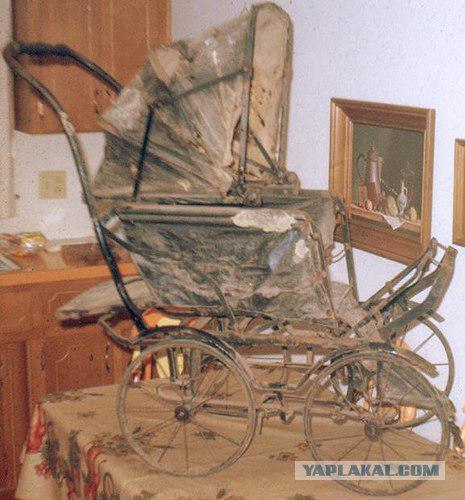
after restoration.
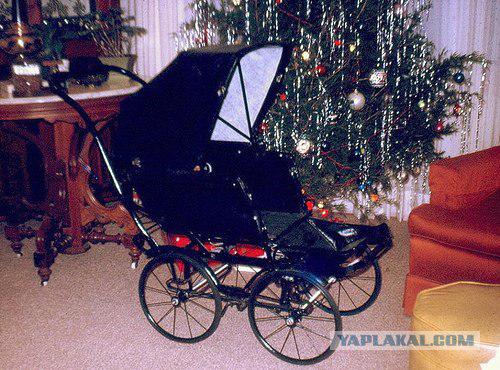
26
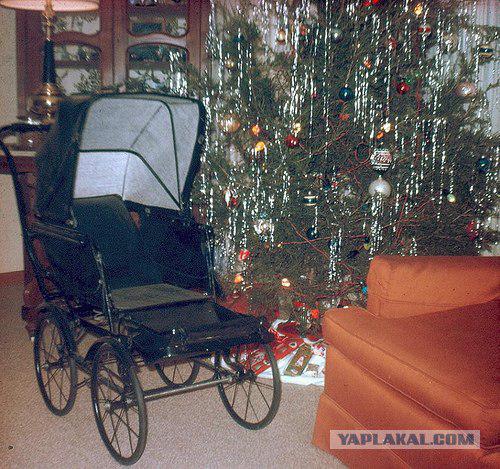
2727
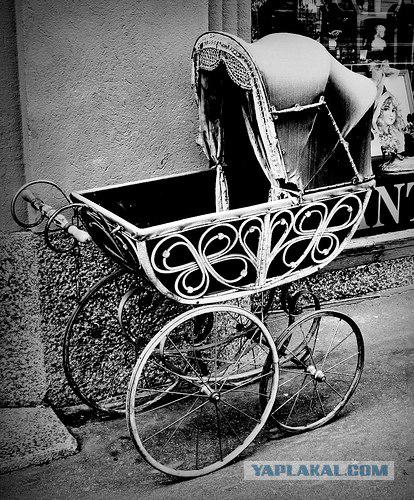
28
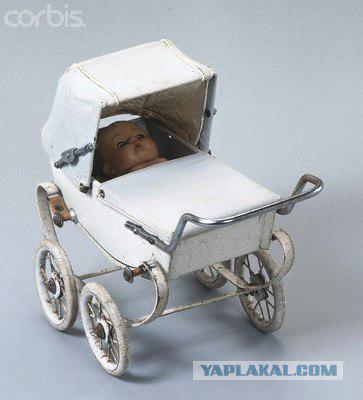
At the end of the 19th century in Britain there was the very first company to manufacture Chair - Silver Cross. It was founded in 1877 and at the same time launched its first model. Since then, the Silver Cross is considered the oldest and most prestigious companies in England, which produces wheelchairs.
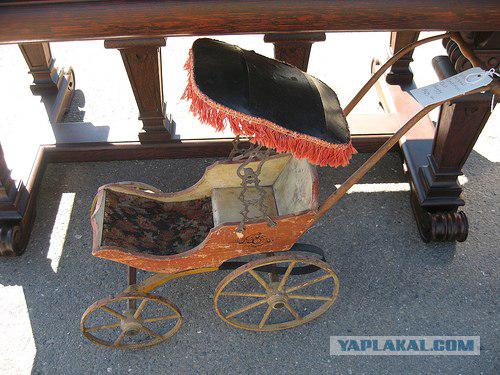
30
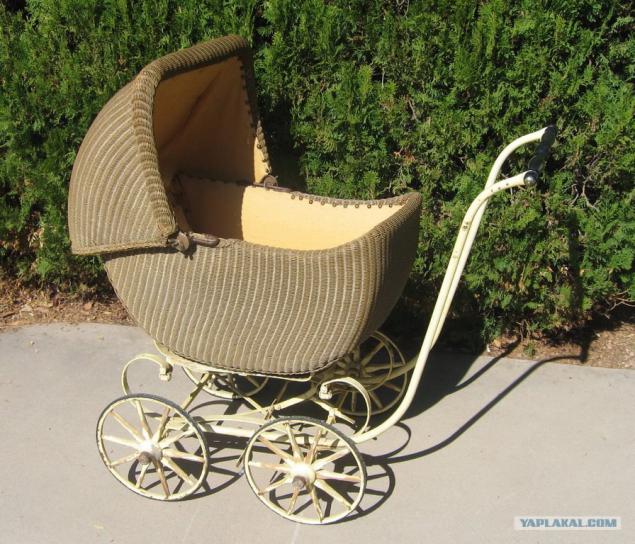
31
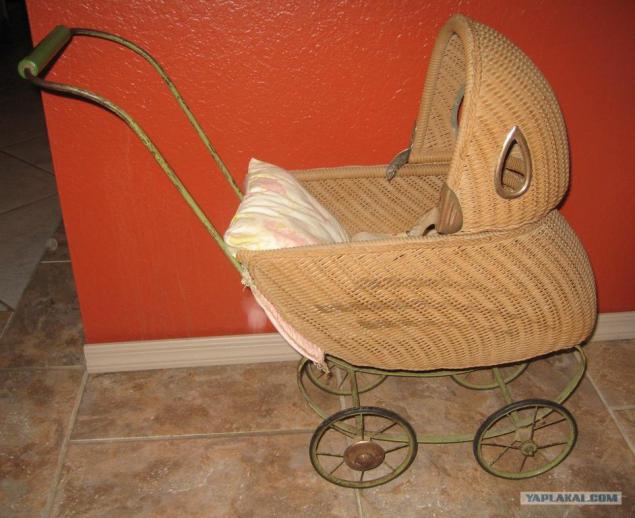
32
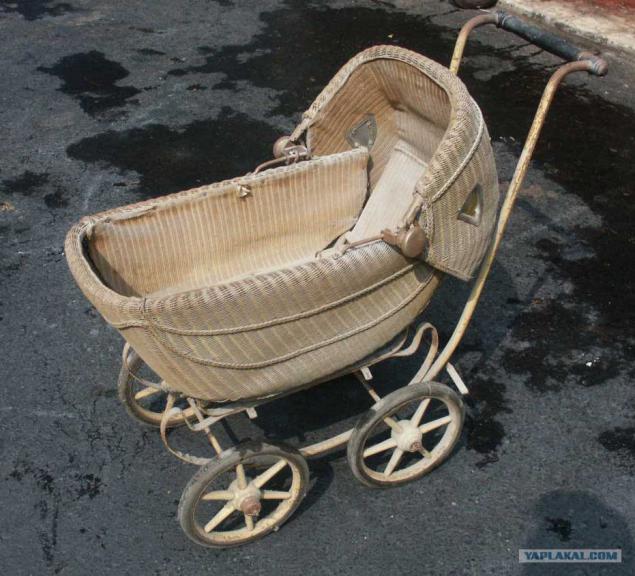
June 18, 1889 in Baltimore Patent Office William Richardson came up with the idea, it happened another revolution in the history of wheelchairs. He invented a reversible stroller model, ie a child could sit in it as a face-to-vozivshemu stroller and back to him. In addition, William has included in his model of the axis, which added a wheelchair maneuverability. Up to the time axis and the wheels were Solid, which did not allow them to be rotated individually. The wheels in the stroller Richardson could rotate 360 degrees completely independently of each other.
With the end of World War I in anticipation of the baby boom market Chair has expanded and is now available to almost all except the poor. Strollers have undergone some changes. They were running boards, prams "basket" became a little deeper, and themselves strollers below, so that a particularly resourceful kids themselves are often chosen from the carriages and made the journey to the nearest land.
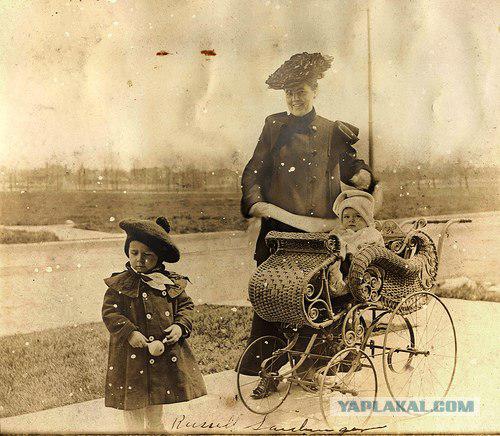
34
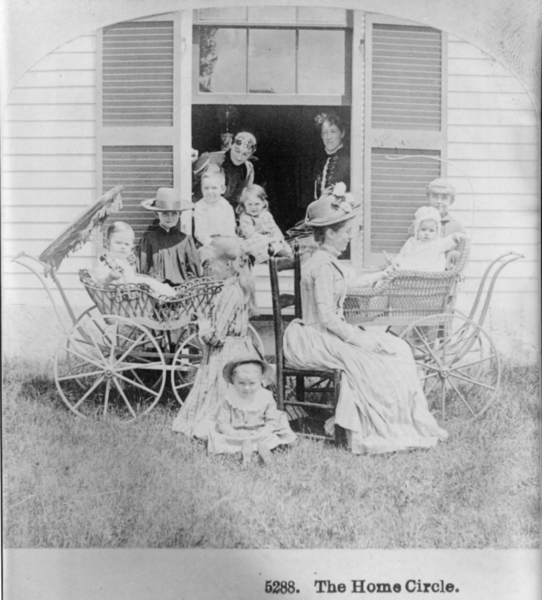
35
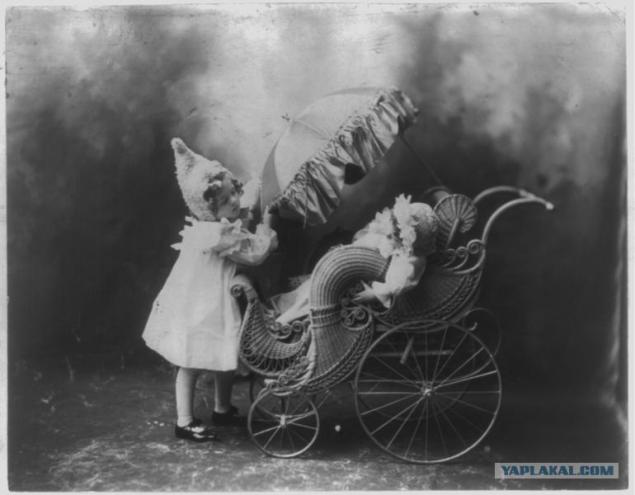
36
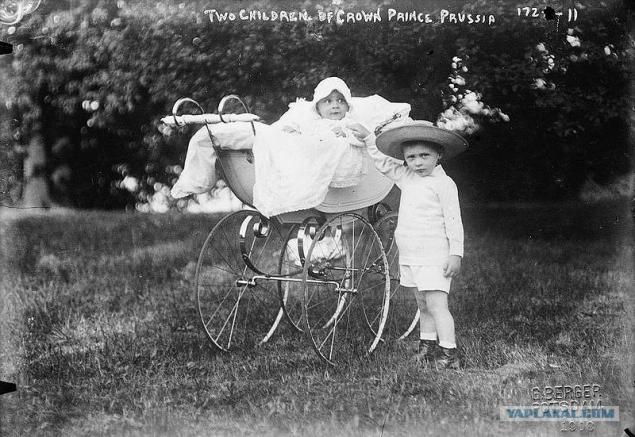
modern --------------------------------- ---------------- ---------
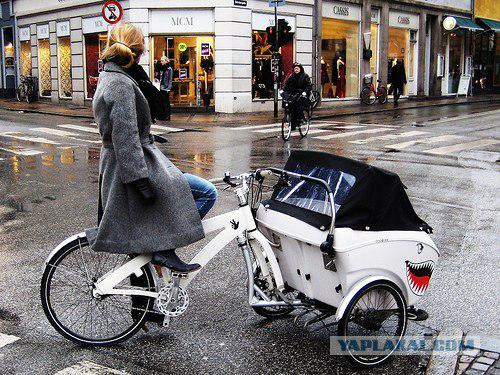
38
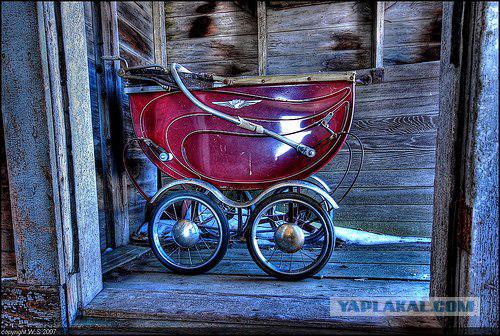
39
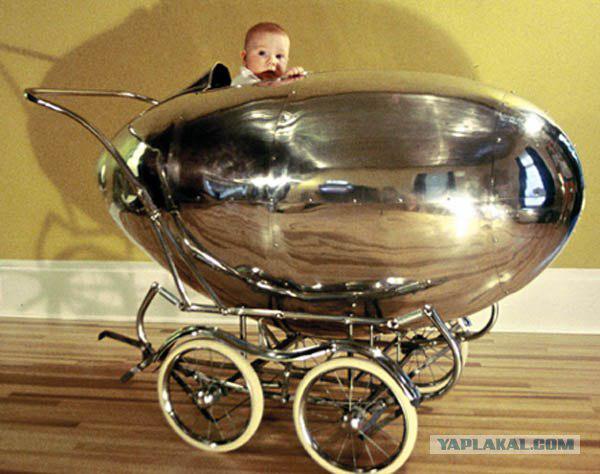
But this was the most expensive stroller pram in the history of the prestigious London department store Harrods, specializing in luxury goods, - the creation of designer Graham Richardson and Alison Murfet.
Via
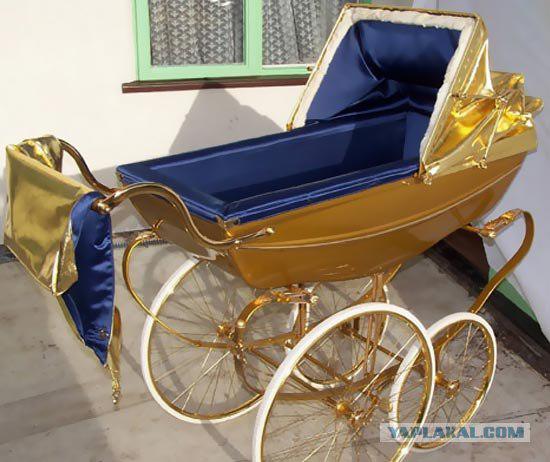
Source:
40 photos + text

Victorian era wicker baby carriage
-Victorian Era baby carriage or perambulator «pram» - It was made between the late 1880s-1898

Antique baby carriage at Chatsworth

The very first pram was created in 1733 by William Kent, the English landscape architect. He designed it at the request of William Cavendish, Duke of Devonshire third, the father of six children. Actually, it was not a wheelchair in our understanding, and a small children's carriage, drawn by a goat or a pony. The first users fully justified effort spent on them: if the customer is not the father grew up in the service Lieutenant of Ireland, some of the skaters in the stroller kids older, Lord Frederick, was promoted to the rank of field marshal to time, and the younger, Lord John, to the Minister of Finance. Model Kent relished, and soon spread among strollers higher strata of European society. While they were truly a work of art. The middle and lower classes could not afford to buy such an expensive toy, and for more than a century carriage remained incredible curiosity.

Sani children
Netherlands. The first half of the 18th century.
Wood, metal (iron); carving, gilding, painting.

Victorian baby carriage in old paint

07

Antique Baby carriage, ca. 1920

The real fashion on the carriage came in 1840 with the light hand of Queen Victoria, loving mother of nine children, who wished himself to walk with their children in the royal park. Like all the carriages of the time, the Queen's carriage can not be called really easy: it was too high and unstable, she did not have handles, and therefore, it had to pull him. Following the royal family began to acquire a wheelchair all wealthy people, first in England and then throughout the world.
By the 1840s gave way to pony nurses, however, and they continued to drag the cart behind him. No need to care for the child was a sign of a wealthy and prosperous families, the number of workers which allows you to raise a child. So stroller came into our lives and has become a sign of the enormous distance between the child and the mother of the upper classes. Even the names of the models Chair of the time reflected their privilege: the most popular have been the model of "The Duchess" and "Princess."

Victorian baby carriage, wicker Laurel Ridge

11

Waterloo Plein - Amsterdam

13

Victorian era wicker baby carriage

15

16

17

hand painted antique victorian baby carriage

19

20

an antique baby or large doll stroller carriage made of wicker with a dark green painted metal frame.

Victorian Baby Carriage

A charming 19th century baby carriage.

Shoe Carriage
Found in the museam of Space Farms Zoo.

A revolutionary leap occurred in 1853, when Charles Burton patented stroller with a handle at the rear. It has dramatically increased as the handling of child crew, and the extent of the review for the little passenger. However, the appearance of repeating the outlines of adult crews is fully preserved, and remained with him, and the idea that a child must sit in a wheelchair. It is very narrowed the scope of its application: it is suited only for grown children. As for the kids, the cases of loss of the "crew" were not uncommon. Only in the last third of the XIX century carriage finally lost similarities with the adult crew and turned into a cradle on wheels. However, even this metamorphosis has not changed the attitude to a wheelchair as a mode of transport, and due to the fact that it has received the mass distribution, the police in London in 1873, forbade her to carry on the sidewalks. In addition, in 1880 it was made a requirement for all kolyaskovladeltsam - baby carriages equipped with red and white lights. When the fashion for the first cars appeared and avtokolyaski and parents began to require nurses with recommendations and even a driver's license. However, the rapid spread of motor vehicles and gassed streets quickly made all this unnecessary - stroller was ousted in parks and gardens, where it remains today.

This antique German Schweitzer baby carriage has great detail and immense visual appeal! Made of soft metal, it features an umbrella with crocheted trim that hangs from a hook mounted at the back of the pram. The carriage body has a wonderful pierced design overall and the 4 large wheels roll along nicely. Marked «Patent Applied For» on the underneath side.
The antique carriage before restoration- before restoration

after restoration.

26

2727

28

At the end of the 19th century in Britain there was the very first company to manufacture Chair - Silver Cross. It was founded in 1877 and at the same time launched its first model. Since then, the Silver Cross is considered the oldest and most prestigious companies in England, which produces wheelchairs.

30

31

32

June 18, 1889 in Baltimore Patent Office William Richardson came up with the idea, it happened another revolution in the history of wheelchairs. He invented a reversible stroller model, ie a child could sit in it as a face-to-vozivshemu stroller and back to him. In addition, William has included in his model of the axis, which added a wheelchair maneuverability. Up to the time axis and the wheels were Solid, which did not allow them to be rotated individually. The wheels in the stroller Richardson could rotate 360 degrees completely independently of each other.
With the end of World War I in anticipation of the baby boom market Chair has expanded and is now available to almost all except the poor. Strollers have undergone some changes. They were running boards, prams "basket" became a little deeper, and themselves strollers below, so that a particularly resourceful kids themselves are often chosen from the carriages and made the journey to the nearest land.

34

35

36

modern --------------------------------- ---------------- ---------

38

39

But this was the most expensive stroller pram in the history of the prestigious London department store Harrods, specializing in luxury goods, - the creation of designer Graham Richardson and Alison Murfet.
Via

Source:


